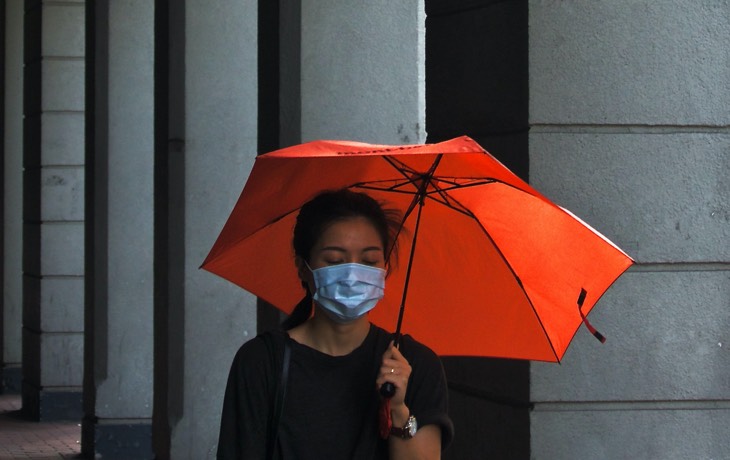Americans want to know when we can go outside again. When can we go to coffee shops, bars, and gyms again? When will we be able to send our children to school again? When will life return to normal?
But reopening dates keep shifting around. Some schools were initially closed until this week, and now they’re closed through the rest of the year. The truth is, no one seems to know when (or if) things will get back to normal.
That’s because we first have to figure out what we’re going to do in order to reopen the economy. To that end, the American Enterprise Institute (AEI) released a report by five of the country’s top doctors, public health experts, and lawyers: Scott Gottlieb, Caitlin Rivers, Mark B. McClellan, Lauren Silvis and Crystal Watson. It’s a four-part plan, and if the United States chooses to follow it, we might be able to figure out what we’ll need to do to reopen—and what that could mean for the country.
The Four-Phase long view of recovery
The AEI plan is meant to help us cope strategically, and it isn’t big on rushing into things. In fact, the plan isn’t even necessarily set up to get the economy up and running as fast as possible. Instead, the experts behind the plan want to do things slowly and carefully. Here’s how it works.
Right now, we’re in Phase I of the plan. But in Phase II, states will reopen one at a time. “Individual states can move to Phase II when they are able to safely diagnose, treat, and isolate COVID-19 cases and their contacts.”
In Phase II, life will return in a recognizable fashion, but with some notable differences to the “before” times. The plan notes that people will be asked to wear non-medical fabric masks while in public. Also, “Public hygiene will be sharply improved, and deep cleanings on shared spaces should become more routine. Shared surfaces will be more frequently sanitized, among other measures.” It’s words like “sharply,” “isolate,” “limit,” and “routine” that make it clear we will be living in a new normal.

Phase III is the most vague, and involves the lifting of social distancing when “safe and effective tools” for reducing COVID-19 risk are available. The plan gives a few examples of possible tools, like “broad surveillance,” therapeutic treatments, and a vaccine.
Phase IV is far away from where we are now. But the AEI plan recommends that before we fully move on from COVID-19, we “ensure that America is never again unprepared to face a new infectious disease threat.” That means developing a system for fast-tracking vaccines, “modernizing” the health care system, and forming what the authors have dubbed the “National Infectious Disease Forecasting Center.”
What’s the timeline?
Well, like every politician and leader and economist right now, I wish I could give a definite date for the reopening of the economy and a return to “business as usual.” But the AEI report doesn’t offer a timeline.
Instead, the AEI suggests “triggers” for moving between phases. Once we meet all the criteria in one phase, that will trigger a slow, measured shift into the next phase of the plan. If our response weakens, that triggers a reversion to the prior phase. If the AEI has its way, we’ll continue like that until we’ve reached Phase IV.
The first step to reopening the economy is moving out of Phase I. That’s where we are right now, and we’re mostly just responding to the crisis as it unfolds.
According to the trigger system, we have to meet three primary requirements before we can move out of Phase I.
- A state must report a steady decline in COVID-19 cases for at least 14 days, equivalent to one incubation period.
- The state should also be able to treat everyone who requires hospitalization without “resorting to crisis standards of care.”
- Finally, the state should be able to test everyone who has symptoms and actively monitor those people and their contacts.
The AEI estimates that if we can get to at least 750,000 tests per week, we’ll likely be able to move to case-based interventions (which we have to do in order to get to the elusive Phase II).
It’s no secret that America’s hospital system has not been up to the task of treating the surge in COVID-19 patients. So the report has some really specific recommendations for our hospitals, including that we get up to a minimum of 2.8 ICU beds per 10,000 adults, and be able to expand that capacity to 5-7 adults in a time of crisis. We should also aim to have 5-7 ventilators per 10,000 adults, not including the current use of in-a-pinch anesthesia machines.
Remember, that’s what we have to do in order to move out of Phase I. That doesn’t mean we’ll be “back to normal,” nor does it mean churches will be full on Easter Sunday. And a few other recommendations before we can trigger Phase II:
- increase our supply of PPE so all hospital staff have access to N95s, gloves, and gowns;
- develop a robust surveillance system to diagnose and track potential cases, their sources, and their spread;
- scale up “contact tracing, isolation, and quarantine to involve using GPS tracking on cell phones, and monitoring of international travelers;
- offer free voluntary isolation and quarantine as some other countries are already doing;
- encourage everybody to wear non-medical fabric face masks.
Sounds easy, right?
What would the world look like if we took the AEI report’s recommendations?

When we finally get to Phase II, most businesses, schools, and universities will be able to reopen (as long as they practice social distancing). But the report cautions that work-from-home setups should continue where they can, and we should limit social gatherings. The reopening will be gradual and careful, and the AEI recommends increasing surveillance as states lift restrictions.
If businesses and schools start to reopen and then a “substantial number of cases cannot be traced back to known cases” or we get a bunch of new cases for at least five days straight, we go back to square one—or Phase I, rather—and start all over again.
We only get to move to Phase III when we have a vaccine tested for safety with FDA approval, or other therapies for prevention or treatment.
If we follow every single one of the AEI report’s recommendations and make it all the way to Phase IV, the world of healthcare as Americans know it will be fundamentally reshaped. It will be cleaner, more sanitary, heavier on surveillance, and centralized. Who knows if our leaders will take this advice. If they do, the “road to reopening” will be long, but possibly effective.

